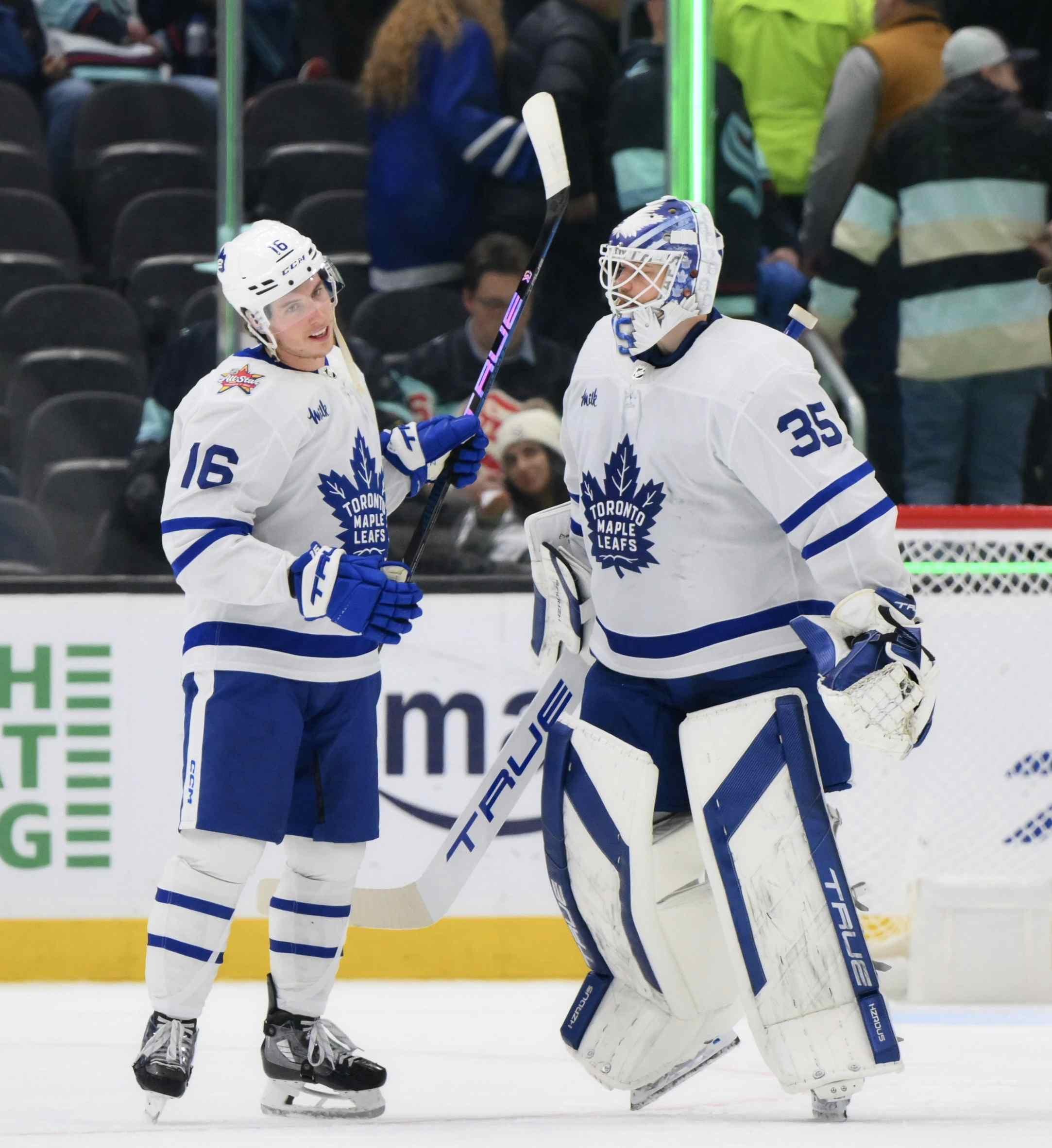NHL equivalencies from the Toronto Marlies’ season
By Cam Charron
11 years ago
Typically playoff games aren’t included in NHL equivalency analysis, which is essentially trying to predict a player’s NHL points based on their performance in an inferior league. But for Nazem Kadri, Matt Frattin, Carter Ashton and Joe Colborne, four forwards who we see having a future on the Leafs, we’d like to use as much information as possible to let us know exactly what we have.
The Marlies, unfortunately, ended their Calder Cup bid being swept out of the Finals series by the Norfolk Admirals, but the run itself was promising. Jonathan Willis did the legwork back in March and found a slight correlation between the success of the AHL team and the future success of the NHL team:
There are a number of possible reasons. Presumably, more successful AHL teams have better players, coaches and managers; it’s certainly possible that those players, coaches and managers go on to influence the parent club. It’s also possible that successful AHL teams typically have more money behind them than unsuccessful clubs, and that additional money translates to NHL success. I can’t say with any certainty what the cause is.What I can say with certainty is that teams with a better AHL affiliate between 2005 and 2008 typically performed better between 2008 and 2011.
Including playoffs, the Marlies had a winning percentage of .591 and a goal differential of +47 over 82 games, which is very promising. The Marlies weren’t just a good team because they won a disproportionate amount of close games: they beat opponents’ by convincing scores.
A lot of that is due to the play of Ben Scrivens, but how about our offence? Danny already went into some depth about Nazem Kadri earlier Monday morning and found that Kadri points-per-game production is right what you’d expect with some of the players from his draft class—the problem is there was just no place on the big club to insert him.
That is the biggest issue facing the Leafs right now, actually, because there isn’t necessarily a shortage of depth NHL talent in the pipeline. Not only are Colby Armstrong, Matt Lombardi and Tim Connolly eating up cap space, but they’re also chewing up roster spots that ought to be reserved for young forwards for a developing team.
Using the NHLe method as put out by BehindTheNet, I calculated the four Leafs’ forwards we really need to care about:
| Name | POS | NHLG | NHLPts |
| Nazem Kadri | C | 12 | 29 |
| Matt Frattin | RW | 16 | 26 |
| Carter Ashton | RW | 12 | 21 |
| Joe Colborne | C | 8 | 21 |
Recent articles from Cam Charron





